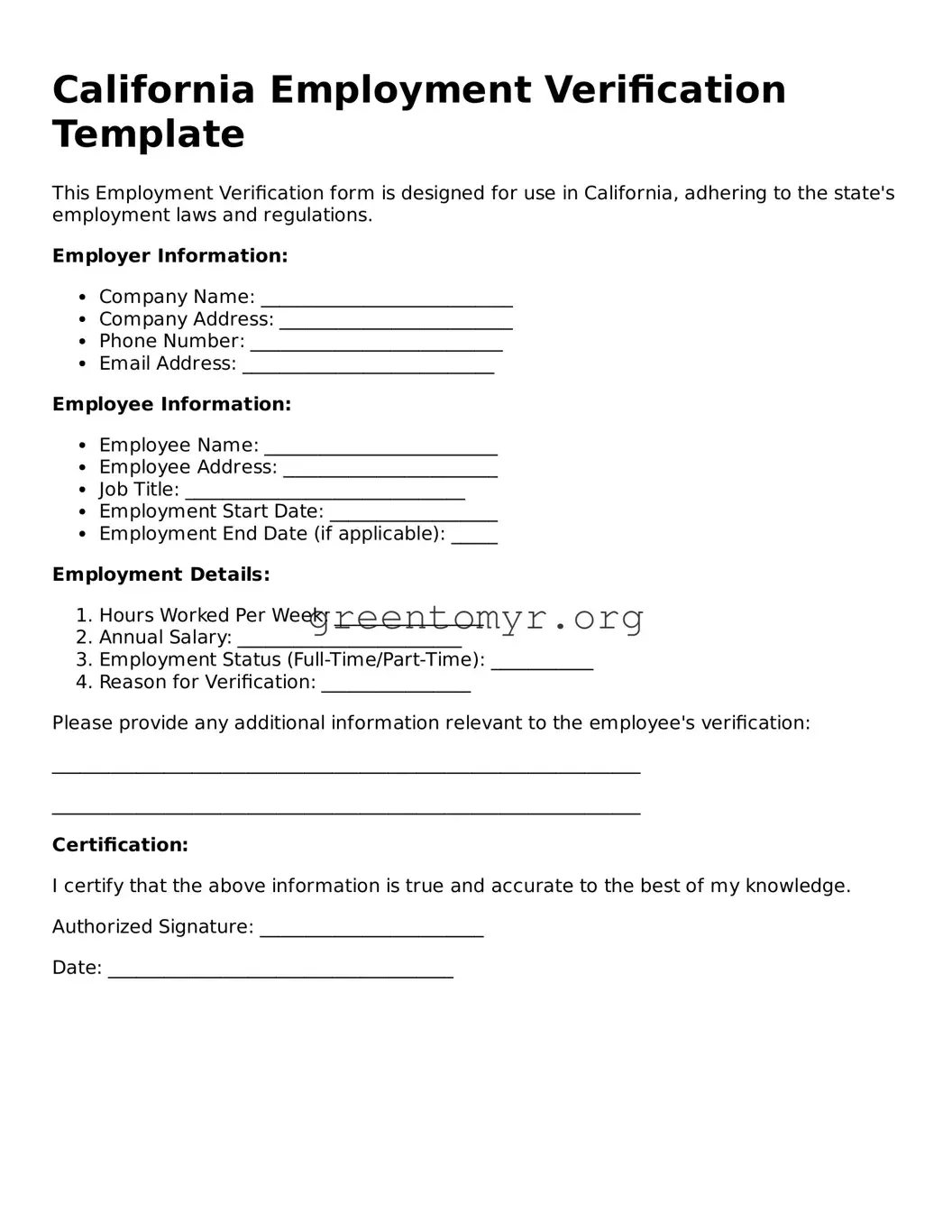Filling out the California Employment Verification form can be straightforward, but many individuals make common mistakes that can cause delays or issues with their application. One frequent error is omitting essential personal information. Always ensure your name, address, and social security number are complete and accurate. Missing even a single digit can result in your form being rejected.
Another mistake is not providing accurate employment details. It is vital to include the correct name of your employer, job title, and dates of employment. Check for typos or incorrect dates, as inaccuracies can lead to confusion and further inquiries.
People often neglect to sign and date the form, which is a crucial step. A signature indicates that the information provided is true to the best of your knowledge. Get into the habit of double-checking that you’ve signed the form before submission.
Failure to include necessary supporting documents is another common error. If the form requests additional documentation—such as pay stubs or tax forms—failure to attach these can delay the verification process. Always double-check the requirements outlined with the form.
Some individuals forget to review the entire form upon completion. A quick review may catch errors or omissions that could lead to problems later. Setting the form aside for a few moments and returning to it with fresh eyes can be beneficial.
In addition, misunderstandings about the verification process can lead to incomplete responses. Make sure you fully understand each section and what is being asked. Don’t hesitate to seek clarification if needed.
Another issue that arises involves how forms are submitted. Some mistakenly believe that any method of delivery is acceptable. Confirm that you are submitting the form through the proper channels, whether that’s online, by mail, or in person, according to the guidelines provided.
Lastly, individuals sometimes overlook deadlines. Verify the submission deadline for your particular employment verification situation to avoid unnecessary complications. Missing a deadline can lead to a total restart of the process, which is frustrating and time-consuming.
